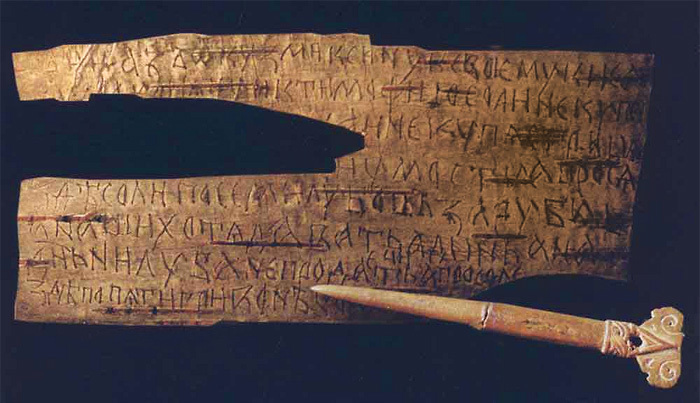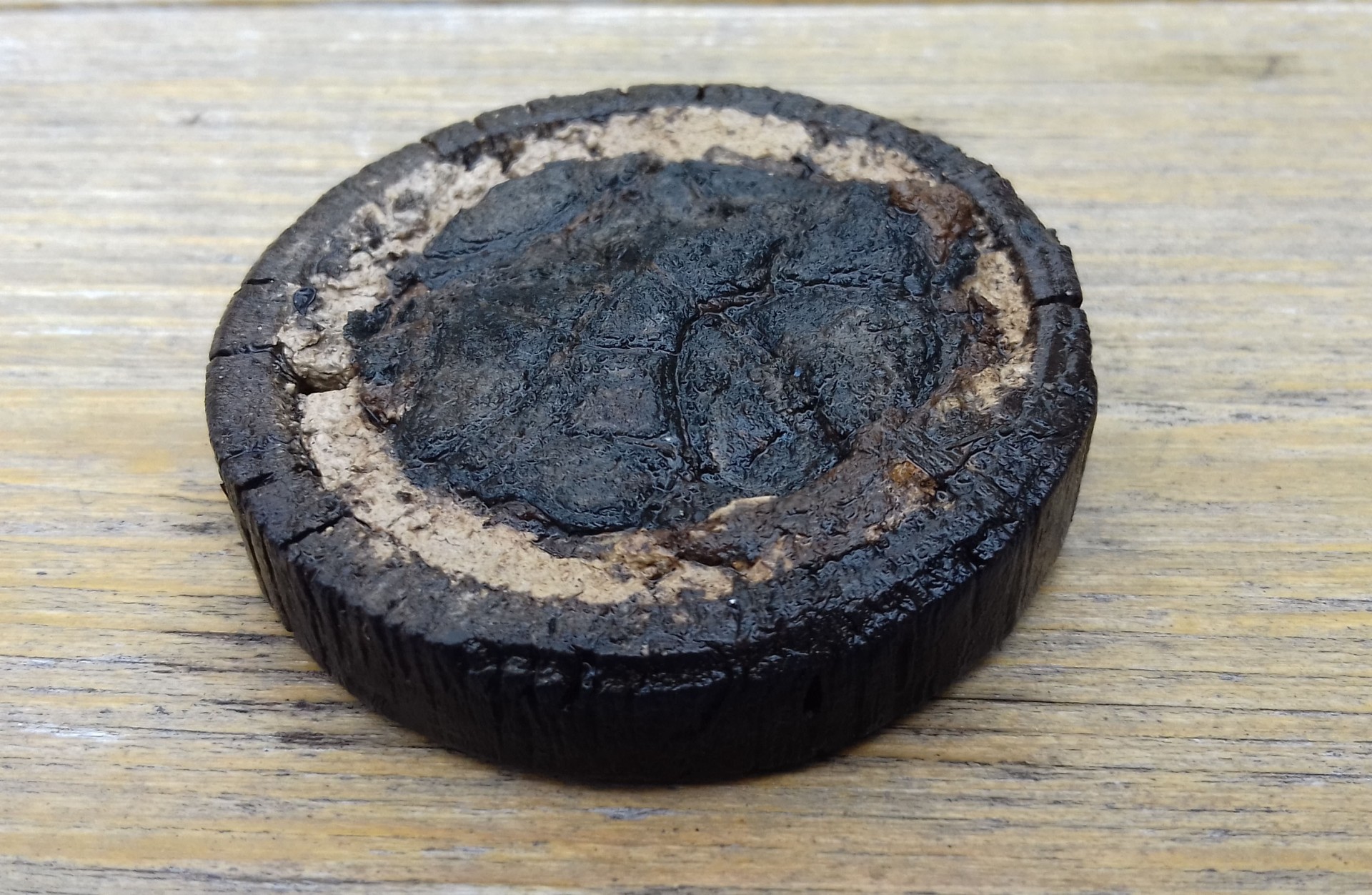Novgorod archaeologists have discovered an unknown ancient Russian curse

Novgorod archaeological expedition began a new excavation season at the Trinity excavation site in Lyudinom end of medieval Novgorod. Experts continue to find birch bark letters scrawled with a stylus (he was then called “writing”) by ordinary people, including even women: a thousand years ago, many of the inhabitants of Novgorod were literate.
Birch bark letters are a unique source of knowledge about the everyday life of people of that era. Earlier, archaeologists found love notes of Novgorod girls (who are not very different from their current Vkontakte records), shopping lists for going
Love note Novgorod girls (fragment)

')
Transfer
`[I sent (?)] To you three times. What kind of evil do you have against me, that this week (or: this Sunday) you did not come to me? And I treated you like a brother! Did I really hurt you by sending [to you]? And you, I see, do not like. If you were to love, you would have escaped from under the [human] eye and rushed ...? After a big break: `... now somewhere else. Let me know about ...? After a gap of 6–8 words, the end of this (or, perhaps, the following) phrase remained: ... [damn] hable. Only voluntary assumptions are possible here, for example, (Nicoli) [you] will never leave you (reject)? or (would you like a date) [th] habelau `do you want me to leave you? and so on. Final phrase: `If I even hurt you by my folly, if you start mocking me, then [you] are judged by God and my leanness (= me) '
The likely reason for the literacy of the inhabitants of Novgorod is that the city was part of the European Trade Union Hansa and was the largest trading contractor of the medieval Hansa. Already at the end of the XI century, a trading post of Gotland merchants existed in the city, and the trade of Russia with the Hansa was carried out through Novgorod .

Hansa Trade Union
Another discovery of Novgorod archaeologists was held on June 21, 2016, according to the website of the Novgorod State Museum-Reserve. It is listed as a birch bark No. 1082.

Birch bark letter №1082
In the layer of the first half of the XIV century at the Trinity-XV excavation a rather large document was found, containing only one line:
UOV ORTIMIE UO POSAKA THREE BEREKOVESEKE
Although the Old Russian language is quite close to the modern and relatively understandable even to the common man (unlike Anglo-Saxon, for example, which cannot be read without special training), but the record in the letter confused the researchers.
Almost every word in this literacy is understandable. For example, “Berkovets” is a common measure of the weight of grain or honey, equal to 10 poods.
But the word POSAK is first encountered in ancient Russian written sources.
For consultation, archaeologists turned to well-known linguist, doctor of philological sciences, chief researcher of the Department of Typology and Comparative Linguistics of the Institute of Slavonic Studies, Russian Academy of Sciences, academician Andrei Anatolyevich Zaliznyak.
On the basis of the Pskov and Tver dialects, Andrei Anatolyevich expressed the opinion that POSAK is a kind of curse (most likely vernacular), which means “thief”, “fraudster”, and writing on birch bark is associated with some kind of dues or debt owed by one resident cities to another.

In addition to the new birch bark letter, on June 21, Novgorod schoolchildren who help archaeologists in their work found a wooden mirror frame at the Trinity-XVI excavation site.

“Such frames are well known for the archeological materials of Ancient Russia and Western Europe of the Middle Ages,” commented the discovery by the head of the candidate of historical sciences, a senior researcher at the Department of Archeology at Moscow State University. Mv Lomonosov Victor Singh.
This artifact was identified as a frame for a mirror by a professor at Moscow State University. Mv Lomonosov, deputy chief of the NAE Elena Rybina and her colleague Ingeborg Kruger (Germany), the authors of the monograph "Medieval glass mirrors", published in 2013.
The peculiarity of the present find is the remains of a preserved mirror surface.
Excavations in Novgorod continue, as well as deciphering the birch bark letters found earlier. The complete database of birch bark letters with photos, screenings, texts and translation is carried out on the site " Old Russian birch bark letters ." To date, more than 1000 birch bark letters have been discovered and decoded.
Who knows, perhaps thanks to the Novgorod archaeologists, the old word POSAK will return to the living Russian language again?
Source: https://habr.com/ru/post/395545/
All Articles